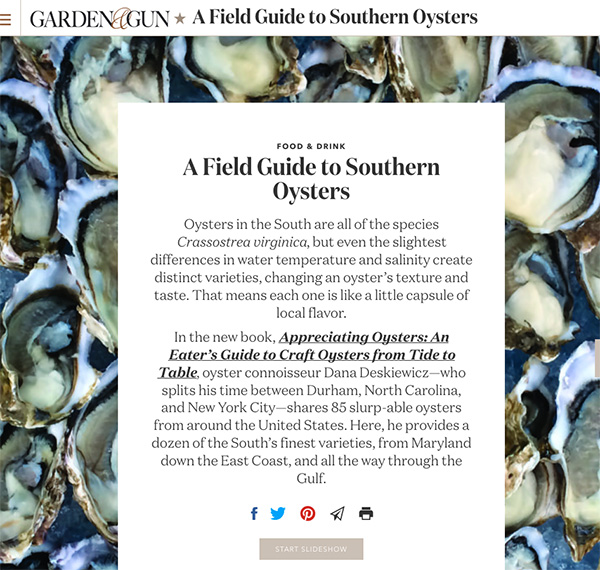This past week a client asked a couple of great questions about oysters and she also shared with me a recent resource worth passing on here.
Recognizing that oysters aren’t everyone’s cup of tea, I have to confess that I grew up watching my grandfather sit on his dock (Colorado River mouth in the Gulf of Mexico, just south of Matagorda, Texas), shucking a bushel of oysters for dinner, and slurping the occasional one right out the freshly opened shell.
It wasn’t until some years later while in medical school in San Antonio that I truly learned to appreciate raw oysters; we had a wonderful place just down the street from our apartment that trucked fresh oysters in the shell up from the Gulf Coast every single day, and shucked them right before you enjoyed them at the old-fashioned wooden bar.
Eating raw seafood of course carries some risks (vibrio parahaemolyticus and norovius, we’re thinking about you two in particular); there are dozens of tasty ways to cook your oysters as well, most of which preserve oysters’ impressive nutritional offerings.
Ounce for ounce, oysters have an amazingly dense nutritional profile, offering up nutritious protein and fat (including omega-3s), vitamins D, C, and A, several B-vitamins, and a nifty collection of minerals, including selenium, magnesium, iodine, copper, phosphorus, and zinc.
A Nifty Guide to Southern Oysters

From the good folks over at Garden and Gun, here’s a link to their Guide to Southern Oysters, a very useful reference covering favored oyster variants from Maryland down through the Gulf.
Image via the linked post at Garden and Gun.


